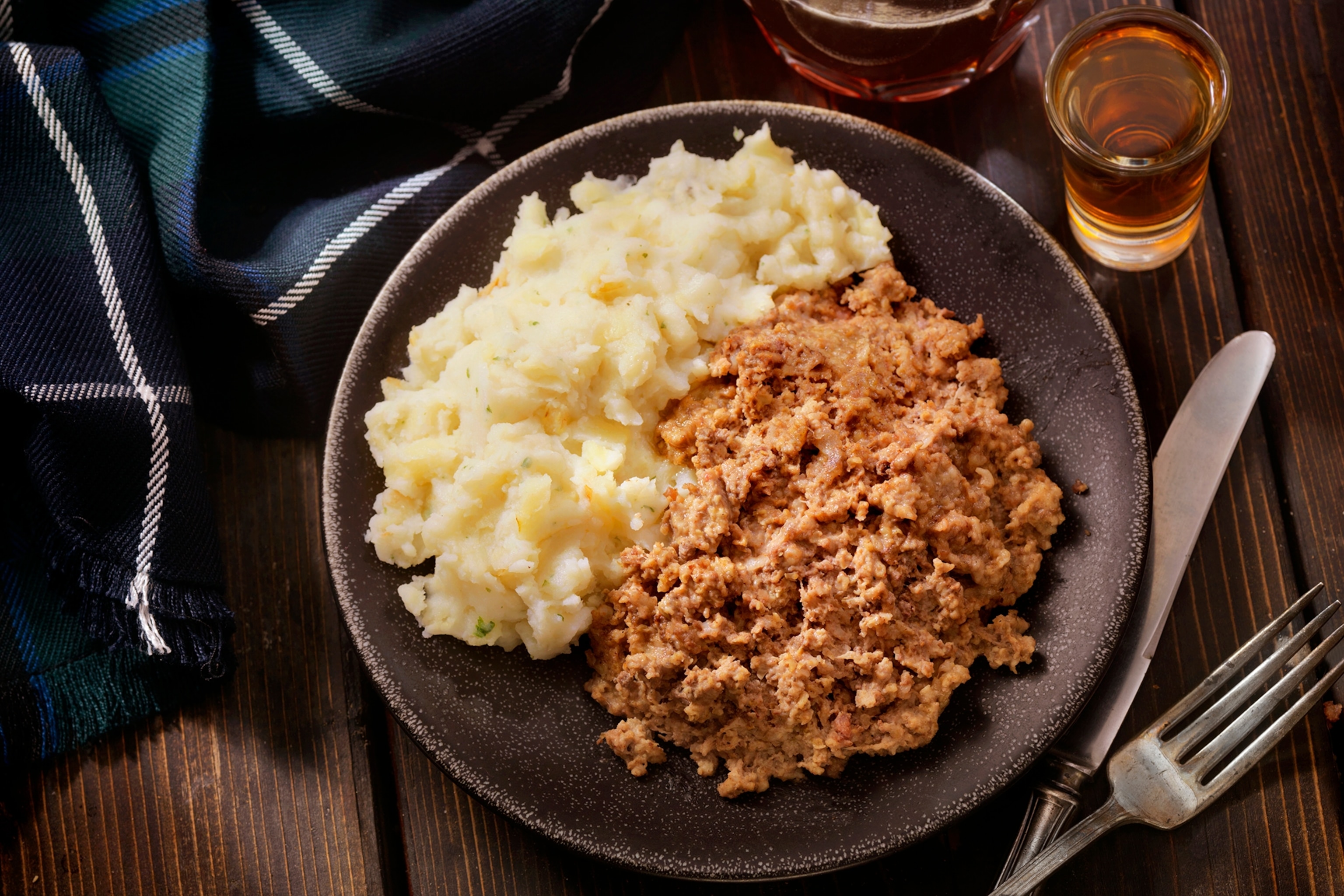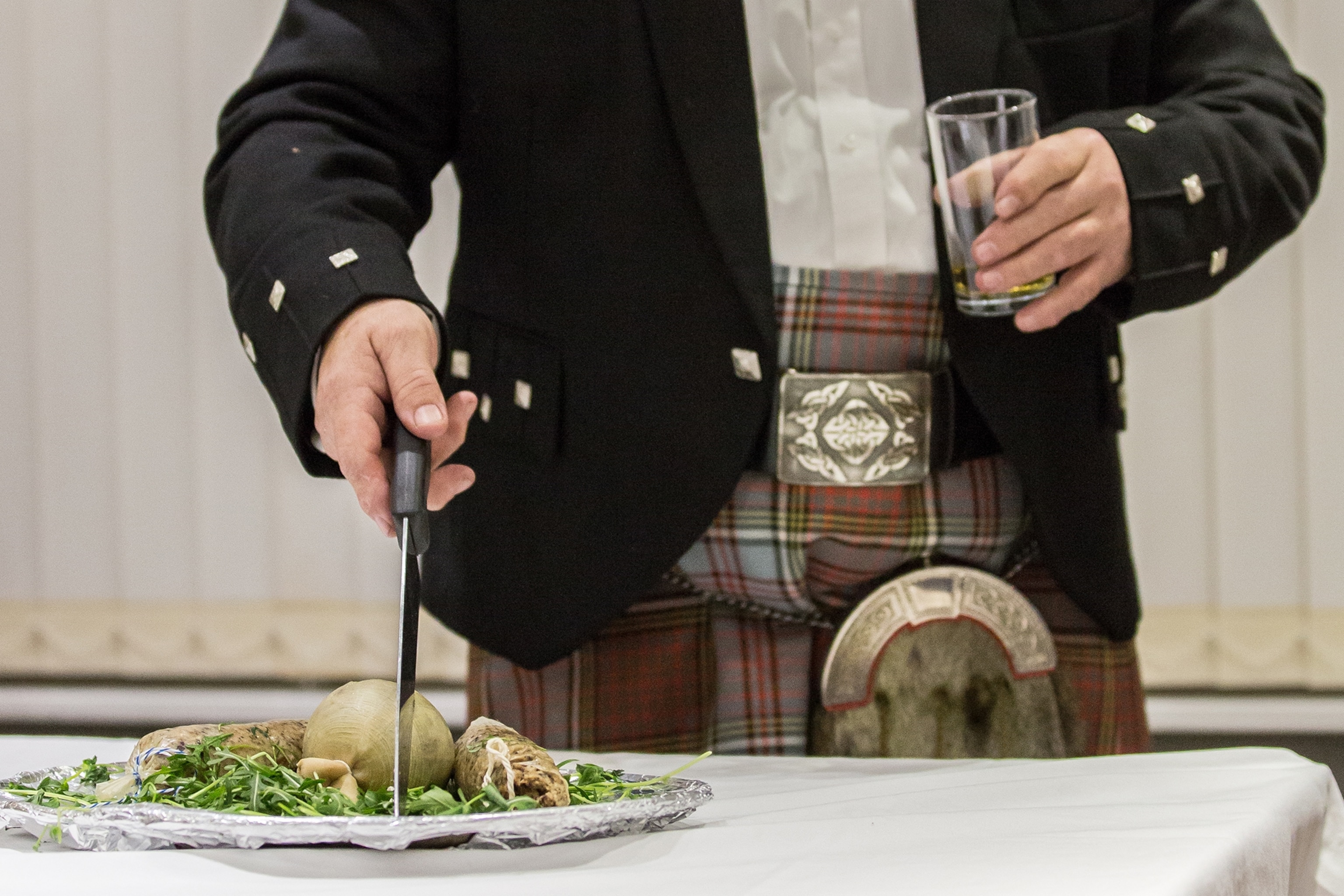The story behind haggis, Scotland's national dish
Haggis is ceremoniously served to a soundtrack of bagpipes each year on Burns Night. But where did this offal-based creation come from?

A quintessentially Scottish dish, haggis is a savoury, offal-based pudding, described as a ‘super sausage’ by food historian F. Marian McNeill, inThe Scots Kitchen (1929). It forms the centrepiece of Burns Night suppers, held on or around 25 January to commemorate the Scottish national poet Robert Burns. Burns dedicated an entire poem to the ‘Great chieftain o’ the pudding race’, but the origins of this traditional dish may be more international than you’d expect.
(What is Burns Night and where can you celebrate it?)
Origins
One of the earliest written references to haggis appears in a 13th-century poem by English knight Walter of Bibbesworth, designed to teach noble children French. It’s believed that the word ‘haggis’ is derived from the French verb hacher or hager (to hack), with hagëis meaning chopped or minced matter. As far back as Ancient Rome, people have stuffed parts of animals such as wombs and udders — the Romans put meat and pine nuts, or sea urchins in them, respectively. And throughout Europe and beyond there are variations of offal and cereal puddings, from Icelandic slátur (made with sheep’s stomach) to the ghameh (stuffed cow intestines) of Lebanon.
In 1771, Scottish writer Tobias Smollett described haggis as ‘a mess of minced lights [lungs], livers, suet, oatmeal, onions and pepper, enclosed in a sheep’s stomach’. But as McNeill notes, the contents of haggis have varied over time. Seventeenth-century cook Robert May (another Englishman) created three haggis recipes, two of which contain no offal or meat (besides suet) and one that’s laden with cream, raisins and herbs. During Lent, when some people avoided meat, May suggested cooking the stuffing in a napkin or bag, rather than a sheep’s stomach, and omitting the suet. Scottish cook Susanna MacIver included beef, liver, oatmeal and mixed spices in her 18th-century recipe for ‘A Good Scotch Haggies’.

How it’s made
Smollett’s description of haggis is similar to modern recipes, but making haggis from scratch is not for the faint-hearted. McNeill explains that first the sheep’s stomach needs to be thoroughly cleaned in cold water, before being turned inside out, scalded (briefly immersed in boiling water), then scraped with a knife. It is then soaked overnight in cold, salted water. The liver, heart and lungs are cleaned and boiled for 90 minutes, ‘letting the windpipe hang over the side of the pot to let out any impurities’. After the gristle and pipes have been removed, the offal can be grated or finely chopped. Toasted oatmeal, chopped onions, suet and a good dose of pepper and salt are mixed with the offal, then the filling is moistened with stock. The stomach is filled just over halfway to allow for the stuffing to expand. It’s sewn up and boiled in water or stock for three hours. McNeill cautions, ‘As soon as [the haggis] begins to swell, prick it all over with a large needle to prevent its bursting.’ She adds that haggis is traditionally served with clapshot – mashed swede and potatoes seasoned with pepper.

Where to try it
1. The Scottish Cafe & Restaurant, Edinburgh
The full Scottish breakfast here includes a classic haggis, alongside quality Scottish produce including bacon, sausage and eggs, and you’ll find a non-meat version available in the vegetarian Scottish breakfast too. In keeping with tradition, the cafe and restaurant hosts an annual Burns Night supper, where diners can enjoy a three-course seasonal Scottish meal and a dram of whisky before live music and ceilidh dancing.
2. Mharsanta, Glasgow
Haggis is celebrated all year long at this bar and restaurant in Glasgow’s Merchant City. From haggis scotch egg with mustard mayo to chicken Balmoral (haggis-stuffed chicken breast wrapped in pancetta and served with a creamy whisky sauce) there’s something haggis-related on the regular menu to suit most tastes, including vegetarian options. Nowhere near Glasgow? You can find a recipe for Mharsanta’s haggis lasagne on the website.
3. Stravaigin, Glasgow
Named after an old Scots word that means ‘to wander aimlessly with intent’, Stravaigin goes the whole hog (or sheep?) by making its own haggis. Available in starter or main course sizes, it comes with a side of neeps and tatties (swede and potatoes). The restaurant’s menu is internationally influenced, so a haggis starter could be followed by Jamaican coconut and scotch bonnet curry or Shetland mussels in a Malaysian rendang broth.





